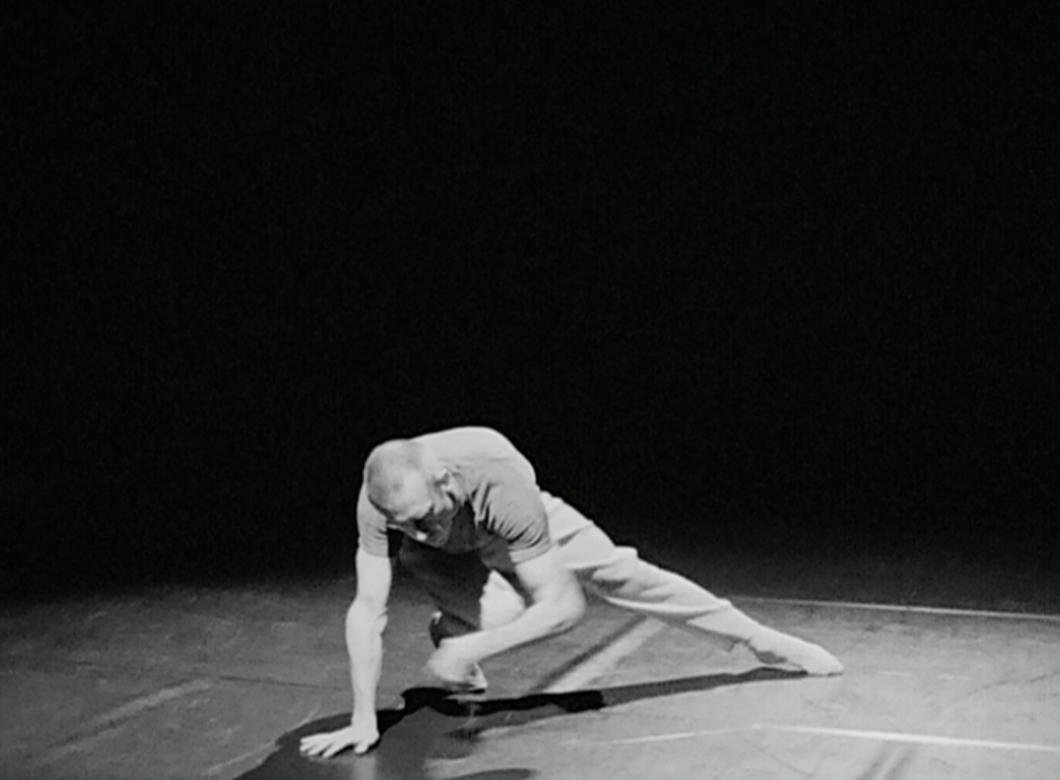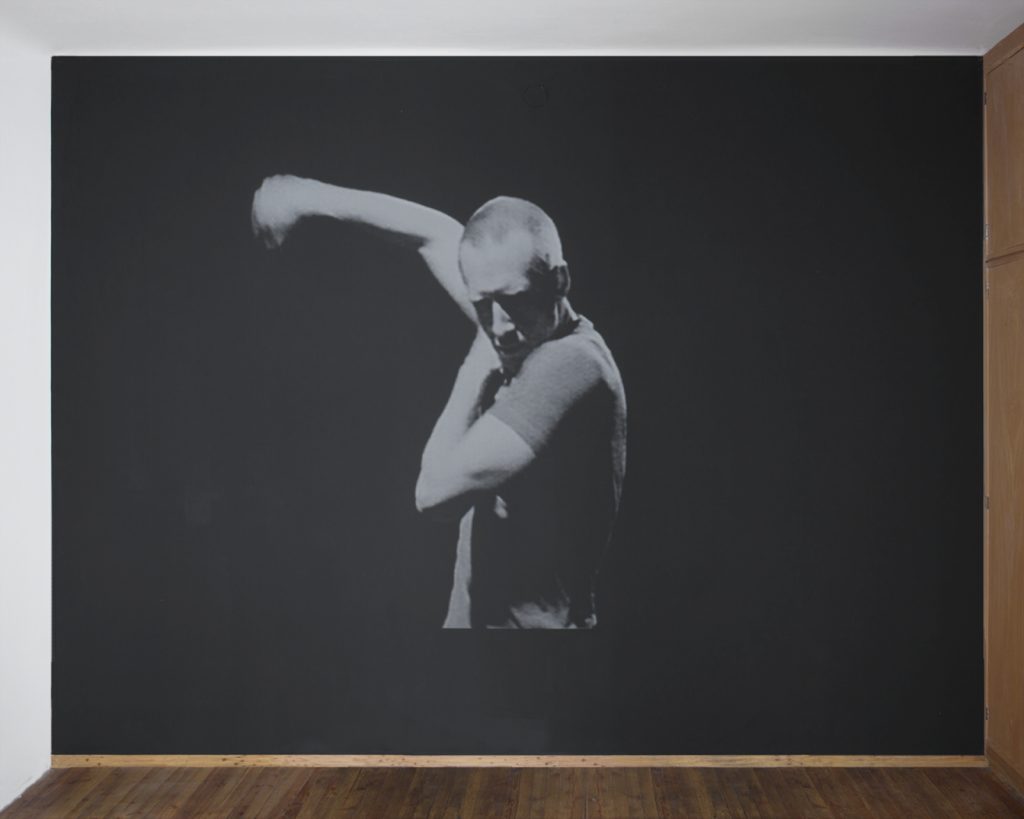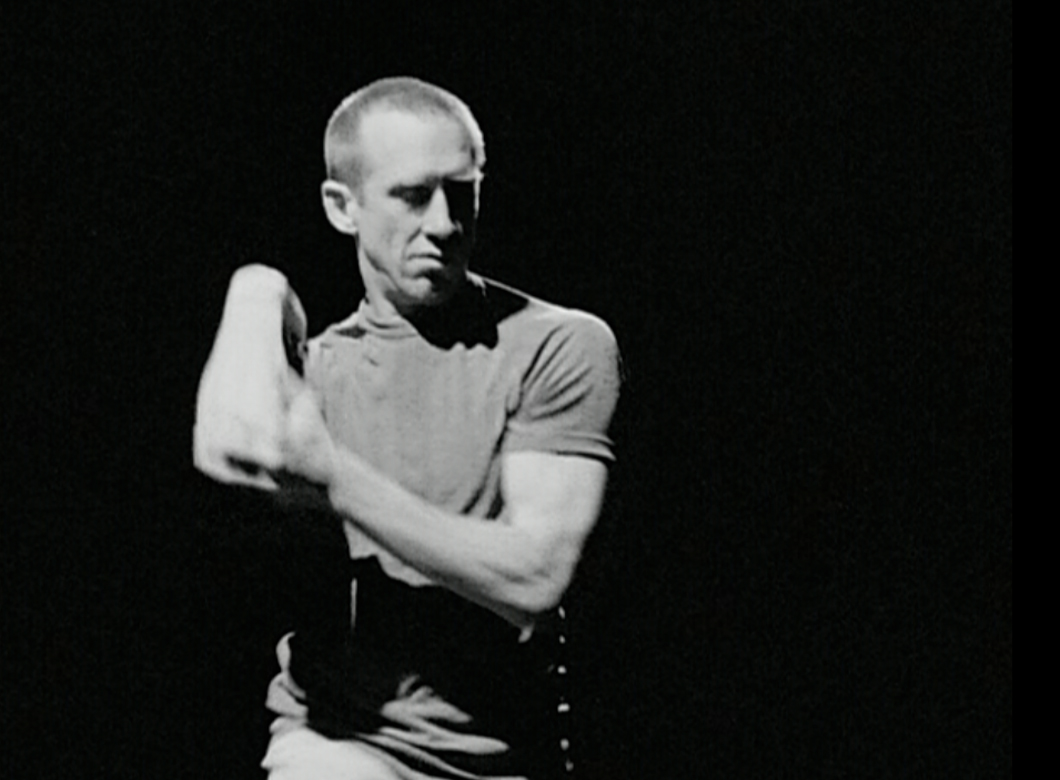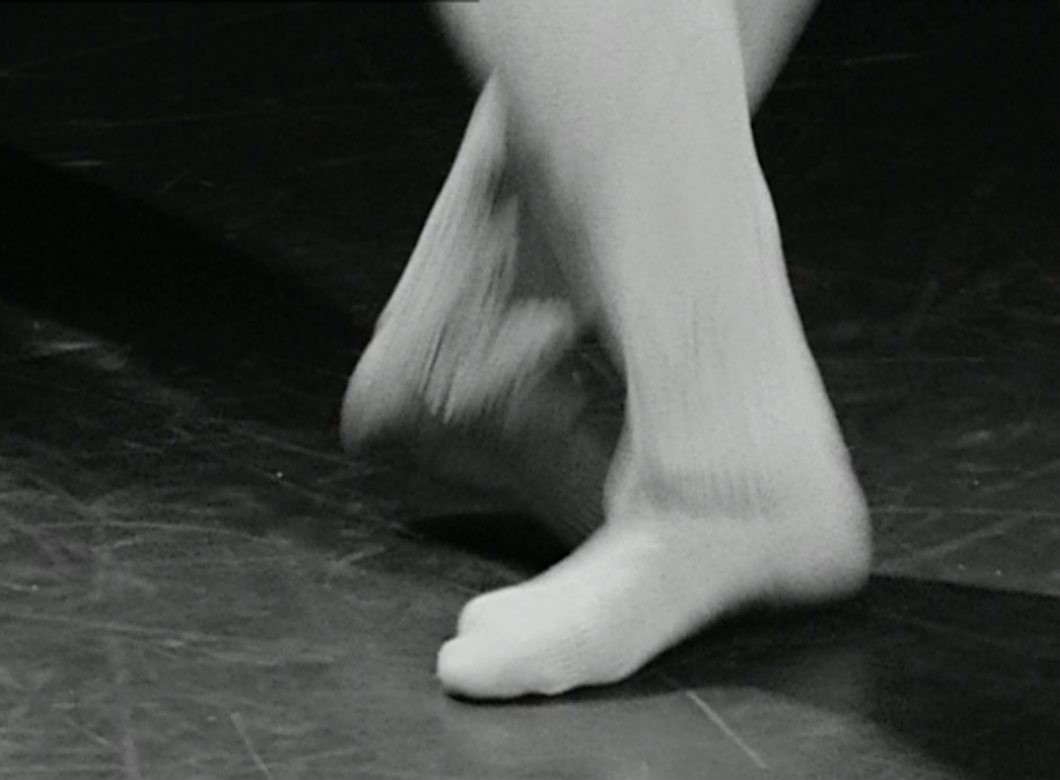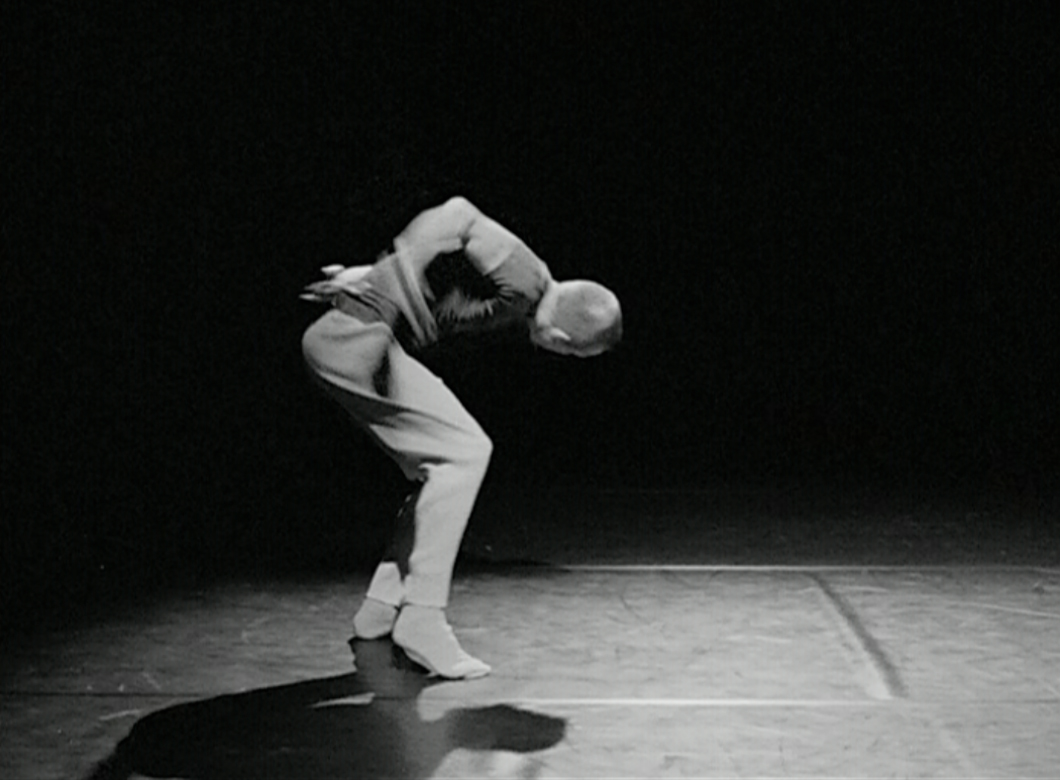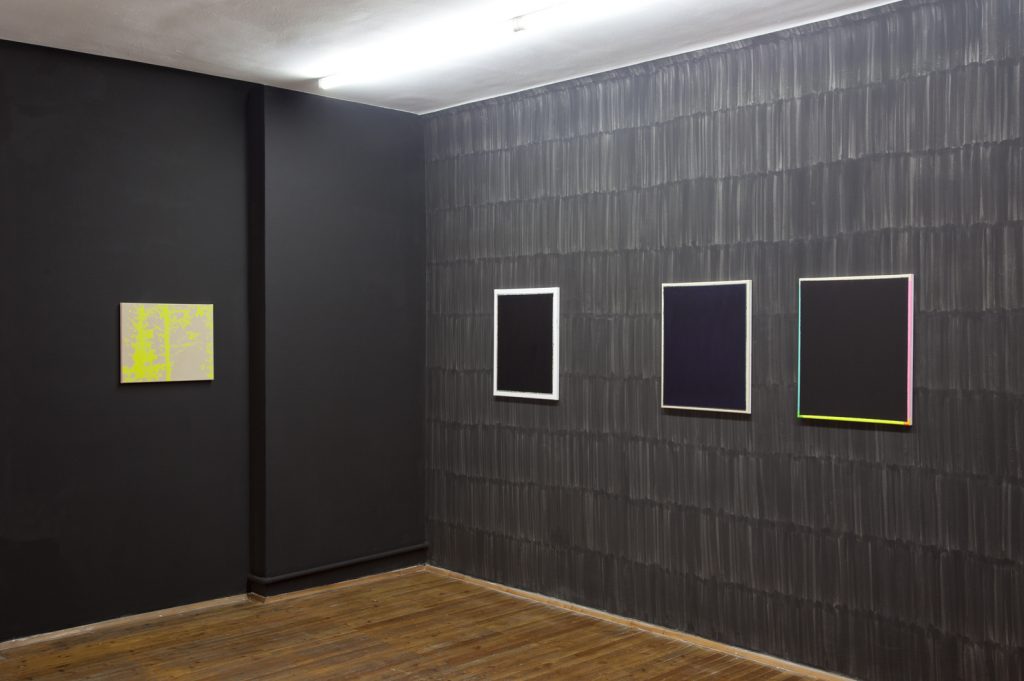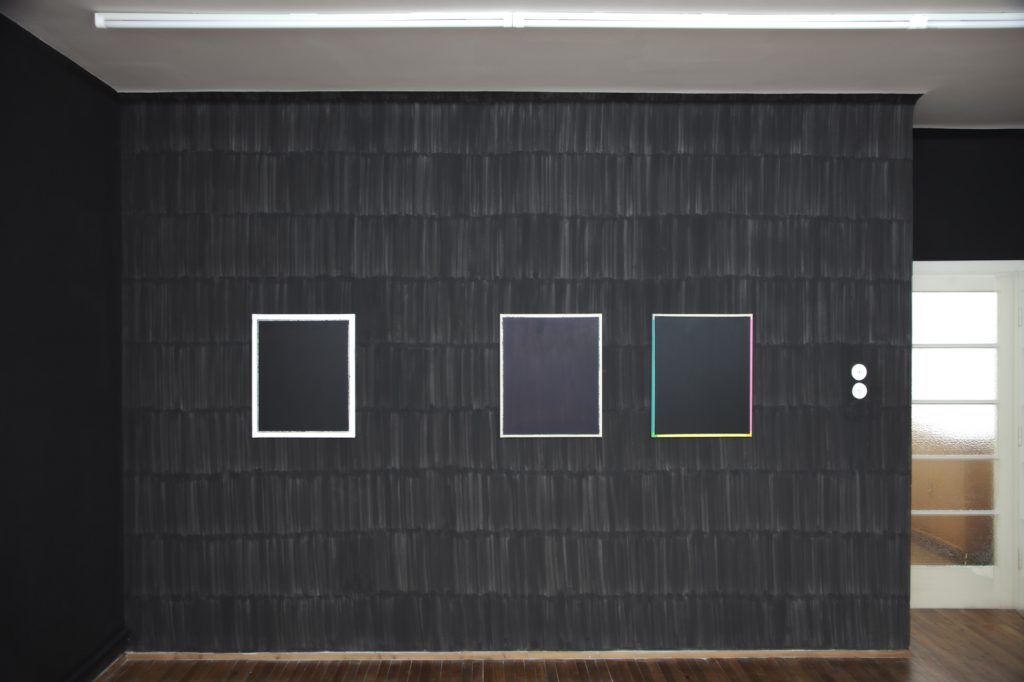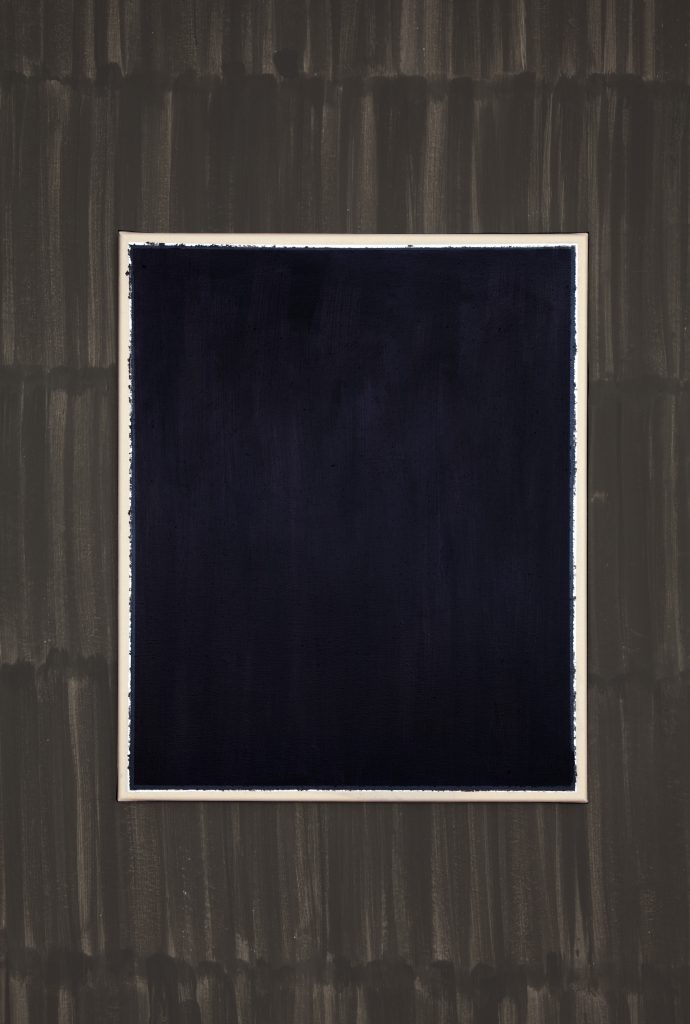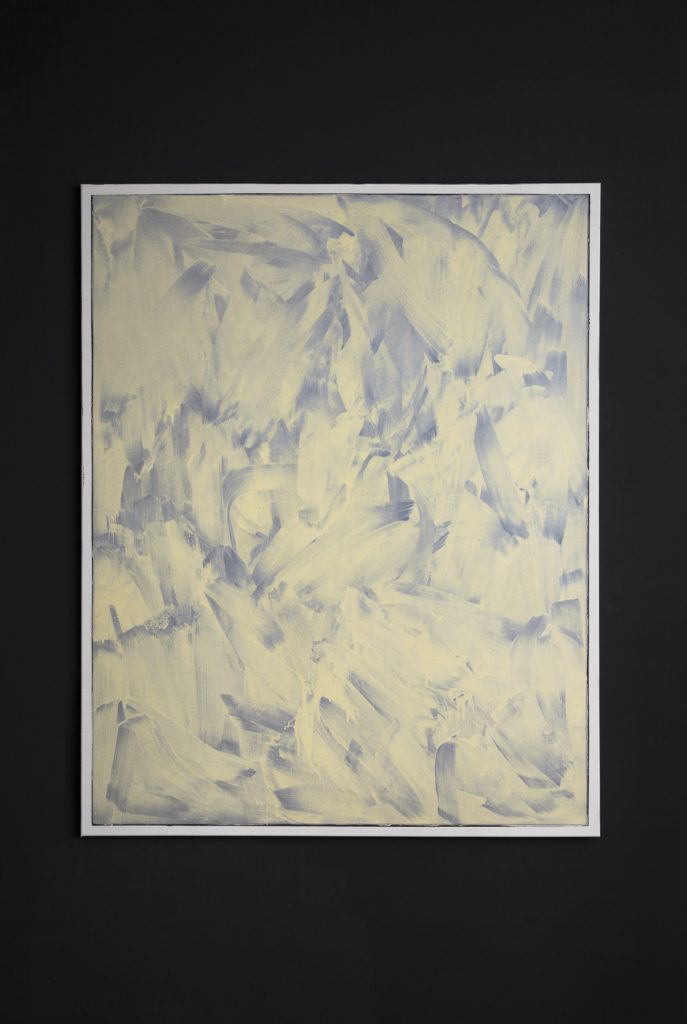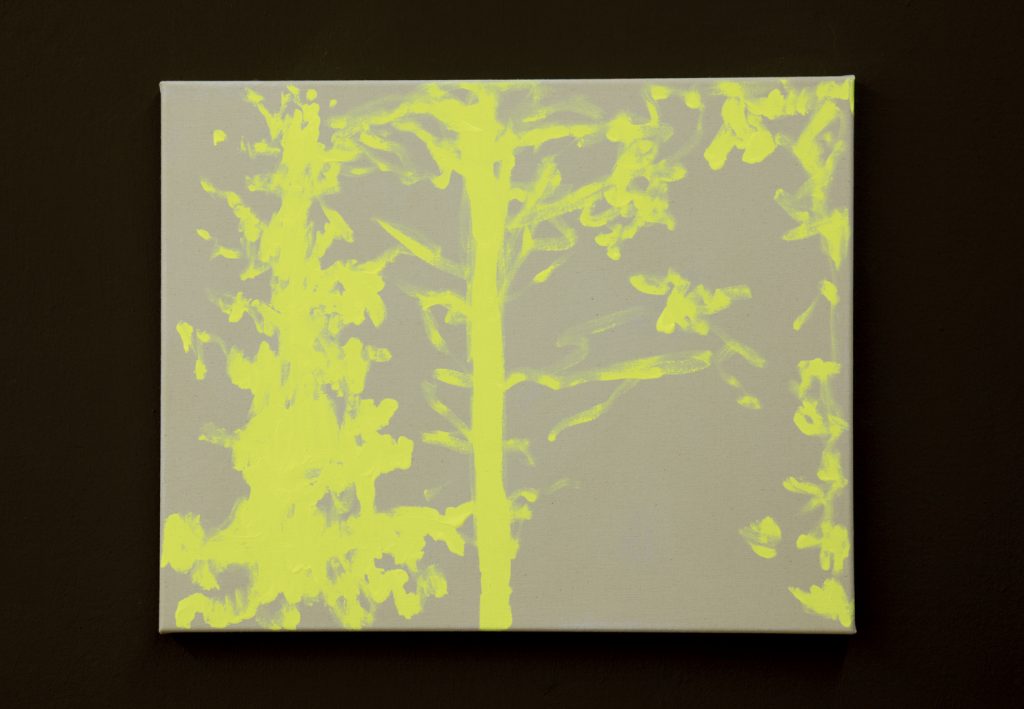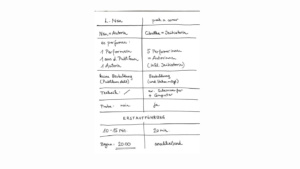As part of its focus on performance art, Neuer Kunstverein Wien presents the joint exhibition ‘Solo’ by the painter Carsten Fock and the choreographer William Forsythe. The exhibition explores parallels between the conceptual-processual working methods of the two artists as well as their exploration of gesture and movement and expansion of the body in space. In the exhibition, the video work ‘Solo’, 1997, which also features William Forsythe in his self-choreographed piece, is placed in dialogue with the painting installation by Carsten Fock.
In his choreographies, William Forsythe combines the movement codex of classical ballet and its geometric principles of order, in which the bodies are exposed to paths of movement ranging from wave-like to rectangularly broken. The body order of classical ballet with its harmonious relationships of the limbs and geometrically guided figurations jumps apart in the flow of eruptive movements. Logical structures and geometries are arbitrarily lengthened, shortened, mirrored, broken, intersected, twisted, or shifted by Forsythe. The dancers' movements form invisible structures of lines, surfaces, and planes, which are repeatedly broken by the physical sequences.
read moreIn his choreographies, William Forsythe combines the movement codex of classical ballet and its geometric principles of order, in which the bodies are exposed to paths of movement ranging from wave-like to rectangularly broken. The body order of classical ballet with its harmonious relationships of the limbs and geometrically guided figurations jumps apart in the flow of eruptive movements. Logical structures and geometries are arbitrarily lengthened, shortened, mirrored, broken, intersected, twisted, or shifted by Forsythe. The dancers' movements form invisible structures of lines, surfaces, and planes, which are repeatedly broken by the physical sequences.
As in his figurations, which are always only hinted at and are hardly formed before they are already dissolved again, Forsythe's body in ‘Solo’ appears both hermetic and attractive at the same time, withdrawn as well as self-referential, in which he forms enraptured and blurred bodily appearances. The dancers in his choreographies also seem to be preoccupied with themselves or alone with other dancers. Their attention is completely focused on their movements. Their dancing does not primarily serve as a representation or the display of their dancing prowess but draws the viewer's gaze into their interconnected, virtuosic trajectories.
In the speed and complexity of Forsythe's choreographies, the dancers’ organized movement logic becomes invisible. Responsible for this gesture of slipping and disappearing, of forgetting and vanishing are complex re- and deconstruction procedures, a strong acceleration of the movement sequences and their algorithmic transformation, which produce a network between the spaces of body and stage.
Forsythe's complex movement sequences have parallels in the processual application of layers of paint in Carsten Fock's works. The recurring figurative forms, recognizable images from history, philosophy, or pop culture, seem to dissolve in an abstract mesh of the drawing-painting gesture to appear only as fragmentary contours. In his process-oriented painting, the pattern-like composition becomes invisible; a kind of thoroughly organized template or grid, which the artist develops from picture to picture, but which he then makes look like a spontaneous and pure gesture again. This repeated repetition of his gestures goes hand in hand with a mechanical, automated process. In this way, painterly gestures and pictorial composition are constantly questioned and scrutinized anew by Carsten Fock. He allows his pictorial gestures and conceptual schemes, pictorial construction and deconstruction to enter into a constant mutual competition, in which moments of remembering and forgetting, of disappearance and revival find their echo.
Carsten Fock designs a kind of stage set for his painting by letting his painting become part of the space-related overall installation. Carsten Fock makes the exhibition space itself the subject; at one time he makes the walls virtually float in the air and at another, they take on an improvised, model-like character through their slanted position.
In the exhibition at the NKW, Fock paints the entire wall with single brushstrokes in an even hatching, which again forms a rhythmic pattern and emphasizes the automatic, stencil-like character of Fock's painting. As different as the artistic origins and artistic means of William Forsythe and Carsten Fock maybe, as congenial they present themselves — in this exhibition, which was created as a cooperation — in their artistic considerations and processes.
William Forsythe is considered one of the world's leading choreographers. His works are known for having detached the practice of ballet from its identification with the classical repertoire and transformed it into a dynamic art form of the 21st century. Forsythe's deep interest in basic organizational principles has led him to realize a wide range of projects in installation, film, and internet-based knowledge development.
Carsten Fock was born in Germany in 1968, lives and works in Berlin and Vienna.
read less
